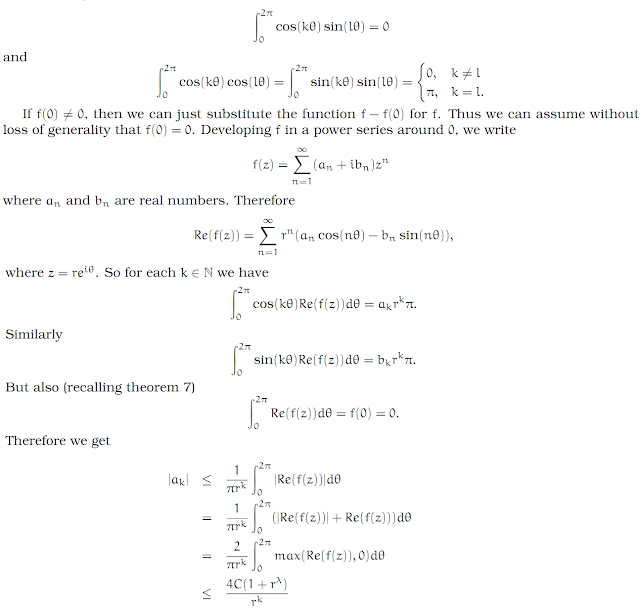Complex Analysis: #29 The Order of an Entire Function
Let f : ℂ → ℂ be an entire function. Assume that there exist real constants C > 0, λ > 0, such that Re(f(z)) ≤ C(1 + |z|λ), for all z ∈ ℂ. Then f is a polynomial, at most of degree [λ].
Proof
To begin with, we know that, for k, l ∈ Z, we have
Therefore, taking r → ∞, we see that if k > λ then ak = 0. An analogous argument shows also that bk = 0.
Definition 17
An entire function f is said to have finite order if there exists some real number ρ > 0 and a constant C > 0, such that
|f(z)| ≤ Ce|z|ρ,
for all z ∈ ℂ. The infimum over all such ρ is the order of f. That is to say, α is the order of f if |f(z)| ≤ Ce|z|α+∈ for all ∈ > 0 and z ∈ ℂ. If |f(z)| ≤ Ce|z|α for all z ∈ ℂ then α is the strict order of f.
Theorem 50
Let f be an entire function of finite order with no zeros. Then f = eg, where g is a polynomial whose degree is the order of f.
Proof
According to exercise 12.1, given f, then there exists an entire function g with f = eg. But then we must have
So Re(g(z)) ≤ |z|α if α is the order of f, and therefore the result follows from theorem 49.
Going beyond this, we would like to think about entire functions of finite order, but with zeros This leads us to Hadamard’s theorem. But before we arrive there, let us think about Jensen’s formula.


No comments:
Post a Comment
If it's a past exam question, do not include links to the paper. Only the reference.
Comments will only be published after moderation